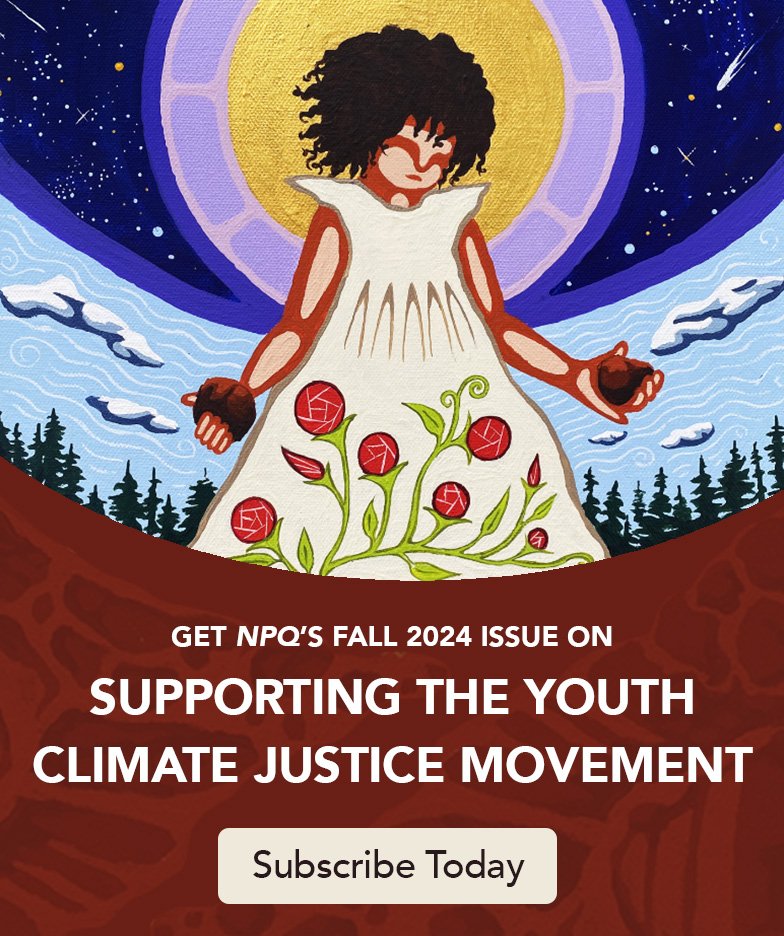
Born as a small, local fundraising effort, GivingTuesday has grown in just over a decade into a global movement of generosity—and a cornerstone of fundraising for countless nonprofits here in the United States and abroad. The effort started in 2012 as a partnership between New York’s 92nd Street Y and the United Nations Foundation. In 2019, GivingTuesday spun out into its own organization and has since grown into a national and international focal point for charitable giving, with millions participating through donations, volunteering, and acts of kindness.
The goals and scope of GivingTuesday’s mission have expanded too. As GivingTuesday cofounder and CEO Asha Curran stated last year, the movement aims to create “an ecosystem of giving that helps communities, causes, and organizations across the globe.”
But beyond its role as a singular yearly opportunity and challenge to raise funds, GivingTuesday has come to serve as a potentially valuable tool for the sector to measure larger giving patterns and for individual organizations to harness individual giving toward growing their overall donor base.
The movement aims to create “an ecosystem of giving.”
“If they’re doing those campaigns and those drives to their websites and they’re getting those donations on GivingTuesday, not only do they get the immediate financial impact, but many times they’re getting maybe new donors on to their donor registry lists that they can continue to market to,” notes Brian Davis, founder and CEO of the nonprofit consultancy firm BryteBridge, which helps nonprofits with everything from compliance to education.
Focusing not just on dollars raised but donors attracted, says Davis, “creates the longer tail of the relationship by having GivingTuesday be kind of a rallying cry.”
While large grants can be attractive, Davis argues, the core of a nonprofit’s long-term stability is usually its smaller, individual donors—exactly the kind GivingTuesday seeks to mobilize.
GivingTuesday is, ultimately, just one more day in the life of a nonprofit, but it’s not one to pass up, says Rhea Wong, a fundraising consultant and author who leads a nine-week fundraising accelerator program.
“I used to be a big-time GivingTuesday skeptic. With all of the noise, does anybody really notice individual nonprofits?” notes Wong. “When I saw the data, I became a believer. Turns out, it’s the largest donor acquisition day for many nonprofits and that churning the waters for generosity helps everyone out—the big fish and the minnows. So, don’t miss out on this opportunity even if all you can manage is a couple of emails to your list. Data shows that it’s worth it.”
2024 So Far
The core of a nonprofit’s long-term stability is usually its smaller, individual donors.
The 2024 fundraising data from the Fundraising Effectiveness Project, a project of GivingTuesday, reveals a nonprofit sector in delicate balance. Total dollars raised increased by 3.7 percent in the second quarter, yet the number of donors declined by 3.9 percent. This paradox speaks to a deeper transformation in charitable giving, often dubbed “dollars up, donors down.”
Sign up for our free newsletters
Subscribe to NPQ's newsletters to have our top stories delivered directly to your inbox.
By signing up, you agree to our privacy policy and terms of use, and to receive messages from NPQ and our partners.
The most telling trend is the dramatic shift in donor participation. Micro-donors of $100 or less, who comprise over half of all donors, experienced a 12.3 percent decline in numbers, making up two-thirds of the total loss that quarter. These smallest donors, meanwhile, contribute just 2.8 percent of total fundraising dollars, highlighting the trend of decreasing grassroots participation.
Donor retention presents another challenge. New donor retention has dropped 9 percent to 11.1 percent, with repeat donors only slightly more likely to give again at a 35.3 percent retention rate—reflecting the importance of GivingTuesday not just as a yearly fundraising opportunity but a chance to build an organization’s donor base.
Some sectors have bucked the trends. Education organizations saw a 5.9 percent increase in total dollars raised, though this growth was driven by a handful of high-performing institutions.
The movement’s youth engagement is also promising.
GivingTuesday Globally
Globally, GivingTuesday has become a platform for localized generosity, as highlighted by the organization’s 2022 Impact Report.
In India, it aligns with DaanUtsav, a festival of giving. In Africa, regional leaders are using storytelling to deepen a culture of generosity. The report highlighted that 76 percent of global acts of generosity are non-monetary—ranging from volunteering to sharing resources.
The movement’s youth engagement is also promising. The GivingTuesdaySpark initiative inspired over 100,000 acts of generosity worldwide in 2022, the report says, with young leaders creating innovative community projects.
The growth of GivingTuesday, the report argues, is thanks less to top-down campaigns than to local, grassroots ingenuity—a fact that itself reflects the resourcefulness and openness to change of the sector at large.
“Co-creation and co-ownership, collective action, distributed power, and proximate leadership helped transform an idea that started in one country into a global movement,” the report states. “Over the past few years, the entire social sector has looked inward to reflect on its approaches and question traditional systems and old power dynamics.”











